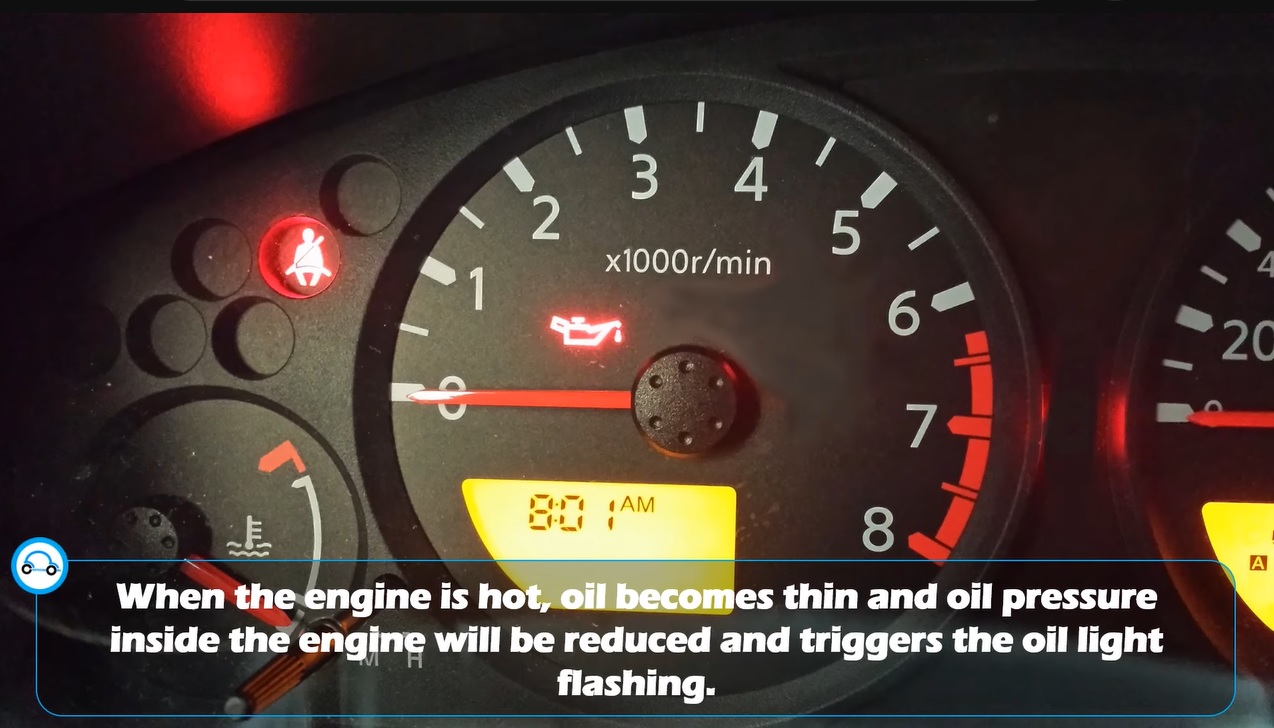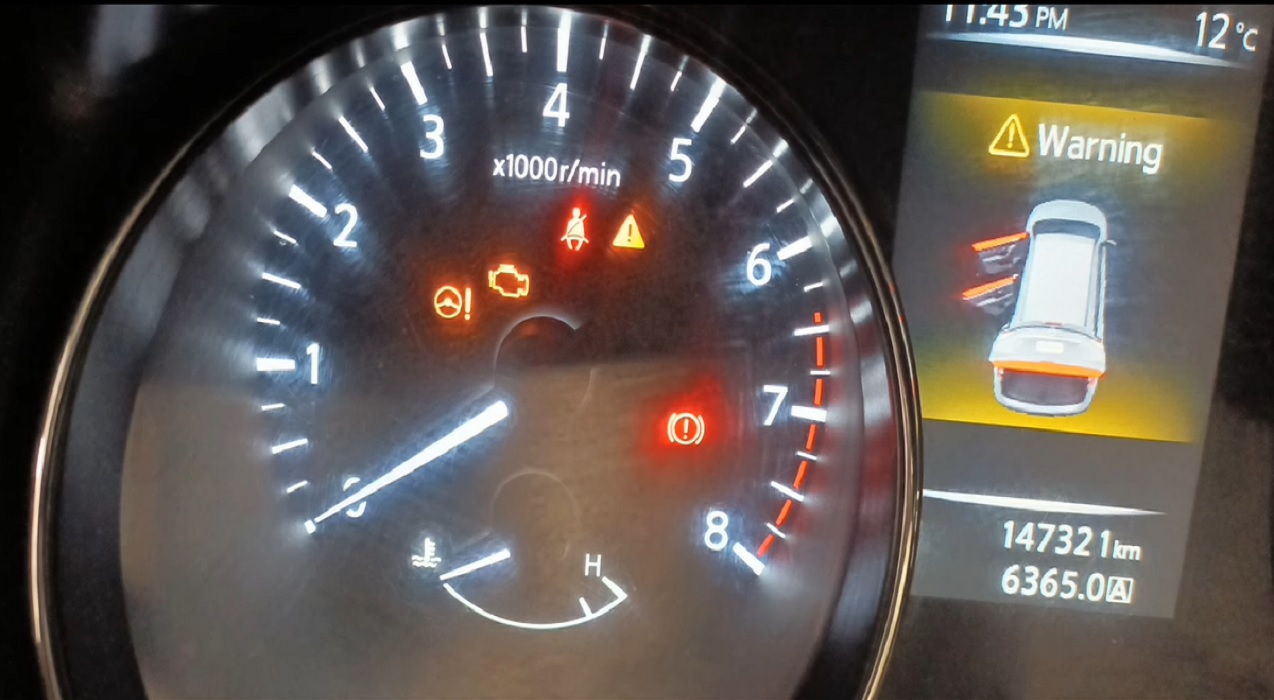
When the car’s engine light illuminates the dashboard, it freaks me out. If your car’s engine computer discovers something wrong in the internal combustion chamber, the light comes on. However, flashing the light indicates some serious or minor issues.
Many car owners often ask me that can low oil cause the check engine light to flash. The answer is yes or maybe not. Because there are dozens of sensors connected to the system. So it is tricky to find out.
But whenever I see the light, I use to check the engine oil first. Low engine oil is the most frequent reason that I found to turn on the check engine light. Here you know more about the problem and how you’ll deal with it.
Can Low Oil Cause Check Engine Light To Flash?
Yes, low engine oil causes the check engine light to flash. Engine oil is a significant staple and it provides the necessary lubrication and power so that the engine runs smoothly. If there is not enough oil, the engine will have a lot of friction between its components and become hot.
Lubrication keeps the internal parts cook and balances the temperature. But low oil overheats the engine and the heat trigger the engine sensors to flash in the dashboard.
Well, there are some consequences. If low oil is the main cause, then the oil light should also flash. In this case, if low oil seriously impacts your’s car performance, the check engine light will flash.
When the oil level is critically low or empty, the check engine light will illuminate. Also, a sudden drop in oil pressure will likely be related to the problem and it can damage without warning.
Low oil results in wear and tear in the oil pump and damages the engine. Also, if you don’t change the oil regularly, there is be low pressure in the oil pump and disable your vehicle.
What To Do If Low Oil Cause The Check Engine Light To Flash?
If the check engine light comes on and stays steady, then it may be a simple issue. But if the light blinks continuously, that means it has a more critical issue. You should park your car in the situation to prevent catastrophic damage. Here are a few steps you can take:
1. Activate Limp Home Mode
However, if you see it all of a sudden in the mid-drive, you can activate “limp home mode.” it is an effective mode that limits the vehicle’s speed and prevents it from revving past approximately 3000rpm. With this mode, you can restrict the engine performance and safely drive the car to the nearest repair shop or home.
2. Check the oil level
Park the vehicle on level ground, turn off the engine and wait for a few minutes to allow the oil to settle in the oil pan. Then, remove the dipstick, wipe it clean with a rag, reinsert it, and check the oil level.
3. Check for leaks
If the oil level is low, you should also check for leaks because it can be a major cause of low oil levels. Look for signs of oil on the ground under the vehicle, on the engine block, or around the oil filter and drain plug.
4. Level up The Engine Oil
Increasing the oil level is the mandatory step in this case. If it is low, add the recommended type and amount of oil to the engine. Refer to your owner’s manual for the proper procedure. Do not overfill the oil pump. Do it properly.
5. Clear the code
If the check engine light is still flashing after adding oil and checking for leaks, you will need to clear the code from the ECU. You can do this by using an OBD-II scanner, which you can purchase or borrow from an auto parts store. Follow the scanner’s instructions to clear the code.
What Are The Other Signs Of Low Engine Oil?

Low engine oil causes the check engine light or oil light to flash. Turning the check engine light frequently is not good for the car. Other signs tell there is a low engine oil issue:
- Engine Overheating: Engine overheating is the most common symptom of low oil. The engine gets hotter while running on low oil and driving with hot engines is a bad idea. It can damage it and cost you expensive. When this happens, let your engine cool down and fill the oil.
- Burning Oil smell: Whenever you smell burning you need to pull over your vehicle instantly. Low oil, leaks, or oil dripping from hot engine parts cause a burning smell.
- Sluggish Performance: Due to low oil, you can experience sluggish performance. If the metal parts of the engine aren’t properly lubricated, they won’t produce enough power. So you can notice a bad performance.
- Engine Clunking: Engine parts are likely to get stuck and cause friction. So, you can hear some grinding sounds or a lot of clunking. This is also a sign of low oil.
Other Reasons For Check Engine Light On
As I mentioned earlier, despite low engine oil, various reasons can cause the check engine light to turn on. For example:
1. A faulty oxygen sensor
The oxygen sensor monitors the emission of unburned oxygen that comes out of the exhaust system. It monitors the efficiency of fuel consumption. If the sensor doesn’t work, the check engine light comes on.
2. Any type of problem with the exhaust system
This system features a complicated design that works to bypass waste products safely. If there is any problem with it that can interfere vehicle’s safety, and fuel efficiency, and disturb the emission pattern, the check engine light will warn you.
3. Faulty gas cap
Due to a faulty gas cap, the check engine light can flash. A gas cap is very important for your car. It prevents evaporating fuel and increases fuel efficiency. If it doesn’t seal properly, you can fix it on your own. If it’s broken or damaged, you need to buy a new one.
4. Faulty catalytic converter
The catalytic converter takes the harmful carbon monoxide gas produced by your car and converts it into harmless materials. If there is a problem with the part, you can see the check engine light, and the emission system won’t work properly. However, it is a very rare case.
5. Bad spark plugs
Faulty or damaged spark plugs can trigger the check engine light to turn on. The spark plug provides sparkles to combust the engine. When it is old or worn out, it can lead to a misfire. However, it is a cheap replacement and easy to fix.
Frequently Asked Questions (FAQs)
Does low oil pressure throw a code?
Yes, low oil pressure throws a code that is P0524 code. If you are checking your car with an OBD-ll tool and you see the code, that means it detects the amount of engine oil is too low.
How does a car act when the oil pump is going out?
Your car won’t get a smooth performance when the oil pump is going out. There will be engine overheating, engine clunking, or smelling burn.
Final Thoughts
The check engine light can illuminate for various reasons. Low oil is one of the most frequent reasons. So to prevent the problem, you should regularly fill the oil and maintain the schedule of oil changes. Thus, you will always get superior performance.
Leave a Reply